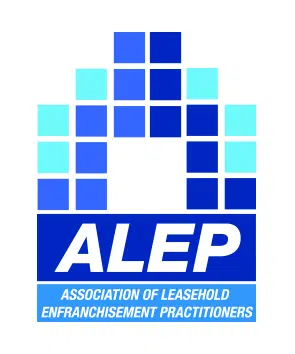Callie Tuplin, specialist lease extension solicitor and residential leasehold law expert at Holmes & Hills, worked with a leaseholder who had their property on the market but who was contending with buyers being put off buy the shorter lease. The client wanted to move sooner rather than later and sought Holmes & Hills advice on how to sell a flat with a short lease.
The client had 87 years remaining on the term of the lease and when they had originally approached their estate agent about marketing and selling the property, the estate agent had explained that the shorter term of the lease may put off potential buyers. The client nonetheless wanted the agent to put the flat on the market and on property portals, in order to promote the property and gauge how much interest there would be at the desired sale price. The client also wanted to gauge how much of an issue the shorter lease would be from the perspective of buyers.
The estate agent had reported to the client that there had been interest and indeed multiple potential buyers had viewed the flat. However, as soon as discussion turned to the issue of the remaining 87 year lease term, would-be buyers were put off. Buyers reported the following reasons for being put-off from buying the property:
After two months of being on the market and multiple buyers being put-off as a result of the lease, the client searched for advice online and found the Holmes & Hills Solicitors website. Seeing Holmes & Hills was on the solicitors panel for the Association of Leasehold Enfranchisement Solicitors (ALEP), the client called Callie Tuplin for free initial advice and guidance on what their options were and how they could make their property attractive to would-be buyers. The buyers were aware by this point that they needed to extend the lease in order to be able to sell the flat and move.
Callie informed the client that if they/their estate agent was struggling to sell the flat with 87 years remaining and if they wished to sell and move sooner rather than later, there were two options likely to be most appropriate for them:
1) Approach the freeholder with a view to ascertaining if they would 'informally' extend the lease. If so, the clients would avoid having to follow the statutory (formal) lease extension procedure which would likely take longer. The flat could be marketed as having a longer lease as the Sale Contract would be conditional on the prior completion of the lease extension. The buyers would buy the flat with the lease already having been extended. The acting lease extension solicitor would need to closely scrutinise the new lease terms proposed buy the freeholder to ensure none were onerous and would impact the flats saleability; including ground rent and ground rent review clauses.
2) Commence the statutory process and provide for the buyer completing it. This would involve the promotion of the flat with the buyers benefiting from the service of the Section 42 Notice in between exchange of the Sale Contract and completion of the transaction. In this situation the buyers would not have to wait two years before becoming 'qualifying tenants' and being able to serve their own Notice; they are assigned the benefit (and liabilities) of the Notice served by the client/seller.
When the client asked whether the lease extension service included dealing with the conveyancing on the sale, Callie informed the client that it did not, but that whichever option the client wished to proceed with, it would be beneficial to have both their lease extension solicitor and conveyancing solicitor working at the same law firm. The two solicitors would need to work closely together to ensure a smooth transaction and reduce the risk of losing a buyer. This would also make the Client's communication with their two legal advisors easier.
Callie informed the client that their conveyancing solicitor would likely receive many questions regarding the lease extension from a buyer's conveyancing solicitor. It would also be necessary for the Sale Contract to provide for the new lease being in place (under option 1 above) or for the assignment of benefit and liabilities of a served Section 42 Notice (under option 2 above). One of these would be a primary condition of sale and in either instance the Sale Contract would need to appropriately protect the Client's interests.
The client spoke about the options with their estate agent and the estate confirmed that they believed there were two separate buyers for whom the main issue was that they they did not want to wait two years before being able to extend the lease themselves. The estate agent spoke with both buyers and both indicated they would be happy to agree a deal, with the purchase price being reduced to factor in the cost of the premium to be paid to the freeholder, by the buyer, following completion of the purchase.
Callie provided the Client with the details of several lease extension valuers who operated in the area where the flat was located and who would be able to provide a lease extension valuation. This would provide a range within which the value of the premium to be paid to the freeholder would likely fall, as well a recommended premium to state in the Section 42 Notice. The client instructed one of the lease extension valuers and a week later had a valuation report.
With the lease extension valuation report (and likely range of premium to be paid) in hand, the final sale price was agreed between the client/seller and the buyer and the conveyancing solicitors moved the transaction forward.
Callie compiled the Section 42 Notice and advised on the Sale Contract to ensure the Client's interests were fully protected, providing for liabilities relating to the lease extension resting with the buyer. Following exchange of Sale Contracts, Callie provided the pre-prepared Section 42 Notice to the buyer's conveyancing solicitor who served the Notice as an agent for our Client/Vendor. With the Notice served, parties were then in a position to complete on the sale at the point both conveyancing solicitors were ready.






A Mackman Group collaboration - market research by Mackman Research | website design by Mackman